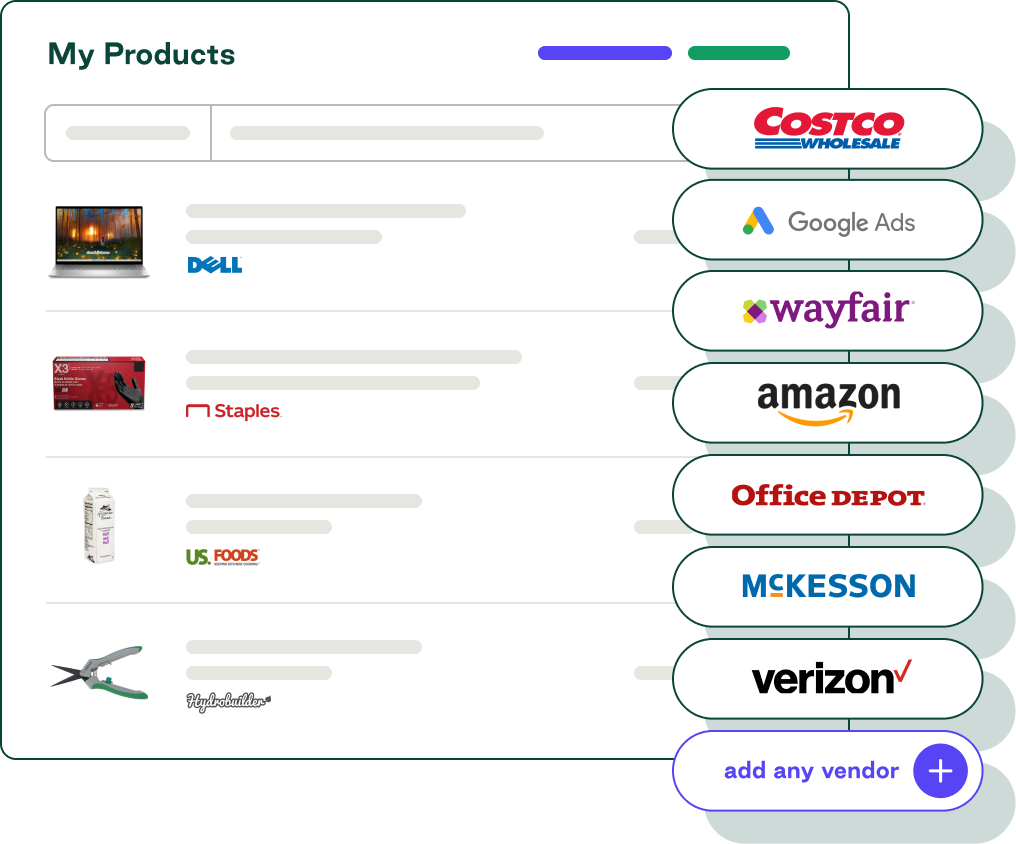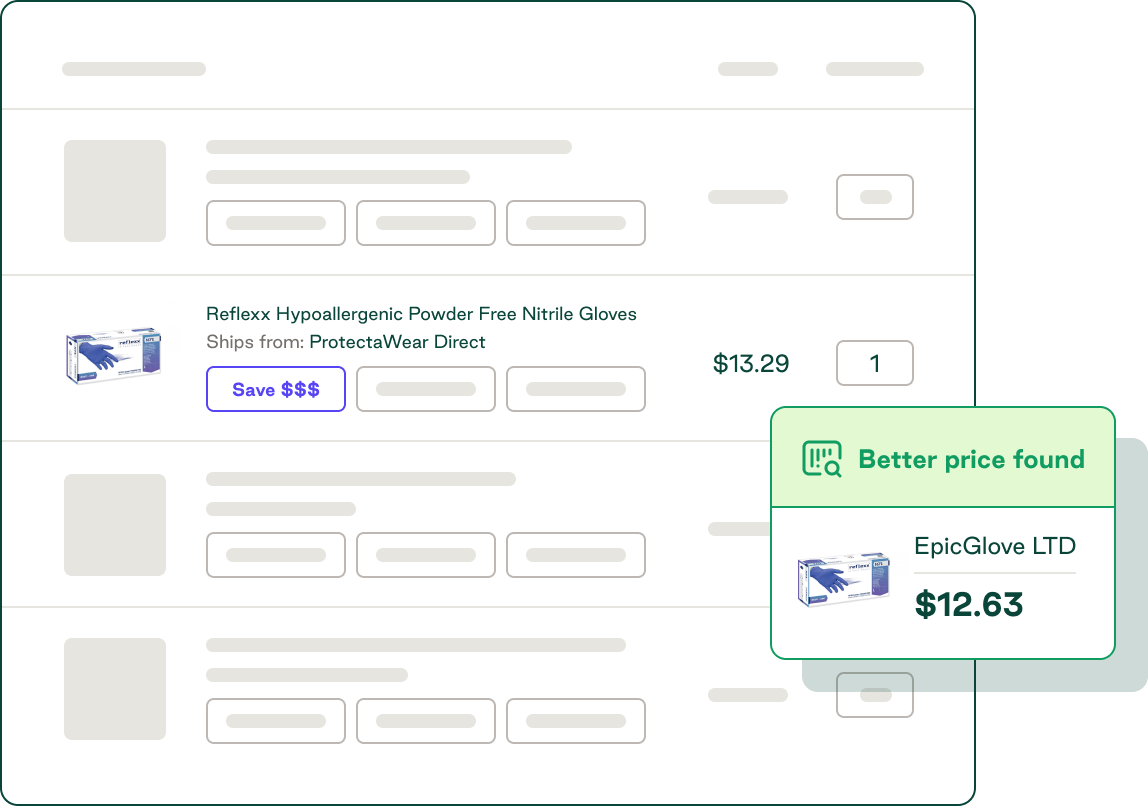Procurement Tools: Best Solutions & Key Features

Procurement Tools: Best Solutions & Key Features
Traditional procurement methods rely on slow, manual processes that restrict productivity and lack granular visibility. These challenges increase risk and make it hard to see where your money’s really going.
Modern procurement tools flip the script. With AI-powered functionality and process automation, they can help you save time managing procurement tasks. Unlike traditional systems, they help transform procurement into a strategic powerhouse for uncovering cost-saving initiatives and actionable insights.
This guide breaks down the best procurement tools and solutions. It explores the various types of systems currently available, explains how to choose the right option for your organization, and reveals where AI fits into the current procurement landscape.
Download the free ebook: Choose the Right Procurement Technology With This Decision Matrix
What are the different types of procurement tools?
Not all procurement tools do the same job. Some handle every step—from purchase request to payment—while others focus on specific stages, such as sourcing, vendor management, or reporting.
The most common types of procurement tools include:
- Esourcing platforms: These systems focus on supplier selection and vetting processes, helping organizations source vendors, manage competitive bidding, and compare supplier contracts digitally.
- Supplier management software (SRM): Designed to manage the entire vendor lifecycle, these solutions include features for onboarding, performance monitoring, risk assessment, and relationship management.
- Procure-to-pay (P2P) systems: These comprehensive platforms help automate and optimize the entire procurement process, from requisition to invoice processing, receiving, and payments.
- Contract management tools: Specializing in contract creation and centralization, these tools help reduce contract-related risks while simplifying supplier contract negotiation and management.
- Spend analysis and reporting solutions: These systems analyze procurement data across organizations to uncover potential issues, spending patterns, cost-saving opportunities, and other strategic insights.
There’s no one-size-fits-all system when it comes to procurement tools. A smaller organization may have little need for advanced sourcing functionality, while a large enterprise may require a comprehensive platform that addresses complex procurement tasks and policies.
5 best procurement tools for scaling teams
Selecting the right procurement tool is essential for maximizing efficiency and cost savings. With so many options on the market, the trick is to find a solution that meets your unique needs and goals.
1. Order.co

Order.co is modern procurement software that simplifies the purchasing process, automates repetitive manual tasks, and provides total spend visibility across organizations. Its AI-powered sourcing features and access to a network of over 17,000 vendors help you save an average of 5% across all your purchases while reducing supply chain risk.
First Learning, a leading North American childcare company, recently implemented Order.co to improve its reconciliation and ordering processes. As a result, the company saved 8–16 hours per week on accounting and reduced ordering time by 4 hours per week per location.
Key features
- Purchase order automation: Instantly send and approve POs for faster, more efficient purchasing.
- Total spend control: Eliminate maverick spend with customizable product catalogs, approval workflows, and spend limits.
- Centralized supplier management: Manage all your vendors and supplier invoices in one central location.
- Easy invoice processing: Optimize your accounts payable processes with automated GL coding, payment scheduling, and three-way matching.
- Real-time reporting and spend analysis: Gain complete spend visibility with granular insights into financial performance and cost-saving opportunities.
Pros
- Increases procurement efficiency and cost reduction with end-to-end spend management functionality
- Integrates seamlessly with your existing accounting system for fast, accurate reconciliation
- Supports user adoption and policy adherence through customizable spend controls and an intuitive user interface
Cons
- May be too complex or feature-rich for smaller businesses with simple procurement needs
- Requires some upfront training and implementation costs that must be factored into your purchasing decision
2. Coupa
Coupa is a procurement management software platform that combines purchasing, invoicing, and expense tracking to help businesses improve spend visibility and budget management. It also leverages collective intelligence from its customers to provide industry-wide benchmarks for procurement.
Key features
- AI-powered spend categorization with live risk notifications and performance dashboards
- Centralized supplier relationship management with real-time collaboration tools
- Direct and indirect spend tracking to prevent budget overruns
Pros
- Offers comprehensive automation tools for eprocurement and supply chain management
- Supports the entire source-to-pay lifecycle, including contract management and cash flow management
- Used by over 50% of Fortune 500® companies, including Reddit and Microsoft
Cons
- Primarily designed for large global enterprises, meaning it’s likely too complex or costly for small and mid-sized organizations
- Many online reviews mention slow loading times and technical issues that may interrupt daily operations
3. SAP Ariba
SAP Ariba is an enterprise-level spend management platform that features procure-to-pay, sourcing, supplier management, and accounts payable tools to help organizations automate purchasing workflows and centralize supplier data. It integrates with other SAP products, including the SAP S/4HANA ERP system, functioning as a modular business solution for global companies.
Key features
- Sophisticated P2P tools that include indirect purchasing, catalog management, and guided buying
- Strategic sourcing functionality that connects procurement with contracting and supplier lifecycle management
- Centralized supplier management, performance monitoring, and risk management
Pros
- Integrates seamlessly with SAP ERP systems and other SAP products
- Highly scalable for large organizations with complex procurement needs
- Gives users unlimited free access to the vast Ariba B2B vendor network
Cons
- More expensive, more complex, and less intuitive than other systems
- Requires organizations to invest in a SAP ERP system, incurring higher risks and implementation costs
4. Precoro
Precoro is a comprehensive eprocurement tool designed to automate manual procure-to-pay processes and increase spend visibility for mid-market organizations. It integrates with popular accounting and ERP systems, including NetSuite, Xero, QuickBooks, and Sage Intacct.
Key features
- End-to-end purchase order management that includes automatic PO generation
- Centralized invoice management and payment processing with Google-powered OCR
- Granular spend and vendor performance dashboards to uncover cost-saving opportunities
Pros
- Intuitive interface supports user adoption and cloud accessibility for remote teams
- Fast and simple implementation process with minimal training required for onboarding
- More cost-effective than complex multi-company ERP solutions
Cons
- Some users have reported that the invoice management process lacks key features and can be clunky
- Although it offers some reporting functionality, several online reviewers have shared a desire for more options and flexibility
5. NetSuite Procurement
NetSuite Procurement is the procure-to-pay module of Oracle NetSuite’s ERP system. It incorporates sourcing management, purchase management, invoice processing, vendor management, and indirect procurement functionality into a centralized system to eliminate data silos and boost process efficiency.
Key features
- Automated PO management that channels purchase orders to approved suppliers and pre-negotiated contracts
- Real-time spend visibility and performance dashboards for live tracking
- Centralized vendor management that simplifies supplier communication and performance monitoring
Pros
- Provides enhanced cost control through enforceable spending limits with predefined approval workflows
- Highly scalable and flexible to accommodate growing businesses and global enterprises
- Seamlessly integrates with other NetSuite modules, including inventory, financials, and supply chain management
Cons
- Only available as part of the broader NetSuite ERP system, which requires greater investment and includes an extended implementation timeline
- High implementation and subscription costs make it unsuitable for most small and mid-sized organizations
How to evaluate procurement tools for your organization
To compare procurement tools effectively, start by asking: what’s slowing your team down and which costs keep creeping up? Once you pinpoint the biggest pain points, you can map features to create a short list of optimal solutions. Then you can begin to evaluate different systems based on more granular factors, such as:
- User adoption requirements
- Scalability and price
- Vendor reputation
- Implementation requirements
- Total cost of ownership
Loop in the teams who’ll actually use the tool—procurement, finance, IT, and anyone else handling purchases. Their input can save you a ton of time (and headaches) later.
Here’s a quick overview of functionalities that affect the efficiency and usefulness of procurement tools.
Centralized vendor and invoice management
Data centralization is a must-have for modern procurement teams. Fast, easy access to essential vendor and invoice information enables you to establish clear audit trails, minimize tedious paperwork, and prevent policy compliance issues.
To unify data management and automate AP invoice processing, choose a vendor management tool like Order.co. It consolidates vendor and invoice info and uses automated workflows to increase accessibility, improve user adoption, and accelerate the entire P2P process.

Real-time budget tracking
Spend visibility is the cure to budget overruns and waste. Without live budget tracking, issues often only surface during month-end reconciliation—when it’s too late to course-correct.
The best procurement tools provide complete budget visibility, enabling better cash flow management and more agile decision-making. Look for features like Order.co’s real-time spend analytics to transform procurement from reactive to proactive and gain the insights needed to prevent budget misuse before it causes serious problems.
Integration with ERP and accounting systems
Procurement has direct ties to accounting and finance management, and strengthening those ties helps prevent common issues like data duplication, manual errors, and budget overruns.
Choose a system that offers native integrations with your existing accounting software or ERP. Automating the flow of transaction data into your accounting records keeps your financial data accurate and up to date, saving time and minimizing risk.
AI and procurement tools: What to look for
Artificial intelligence is transforming procurement tools for the better. Instead of slogging through spreadsheets, AI enables more efficient operations and scalable processes to handle the increasing complexity of global supply chains.
Modern procurement tools like Order.co leverage AI to optimize critical processes, including:
- Sourcing: Recommends alternative vendors and products to optimize spend and reduce ordering risk
- Approvals: Suggests purchasing revisions based on historical performance to simplify approval processes
- Catalog creation: Automatically creates a custom catalog using detailed analysis of purchasing history to save your organization time while enforcing compliance
While extensive searching and manual data analysis used to be the norm, today's AI-driven tools are masters at quickly assessing large amounts of information. They can help you uncover more cost-effective products, prioritize issues that need attention, and safeguard against errors and fraud.

Build a scalable, future-proof procurement stack with Order.co
Scaling organizations need a flexible, long-term solution that supports every stage of growth. Procurement tools that require a complete ERP overhaul aren’t just costly—they’re high risk.
Order.co simplifies procurement, helping you work efficiently, scale seamlessly, and control costs. With advanced features like vendor consolidation, AI-powered sourcing, and purchase order automation, you can easily overcome the biggest challenges in procurement and maintain smooth operations.
Schedule a demo today to explore how Order.co automates requisitions, approvals, and vendor management in one unified platform.
FAQs
Get started
Schedule a demo to see how Order.co can simplify buying for your business
"*" indicates required fields



